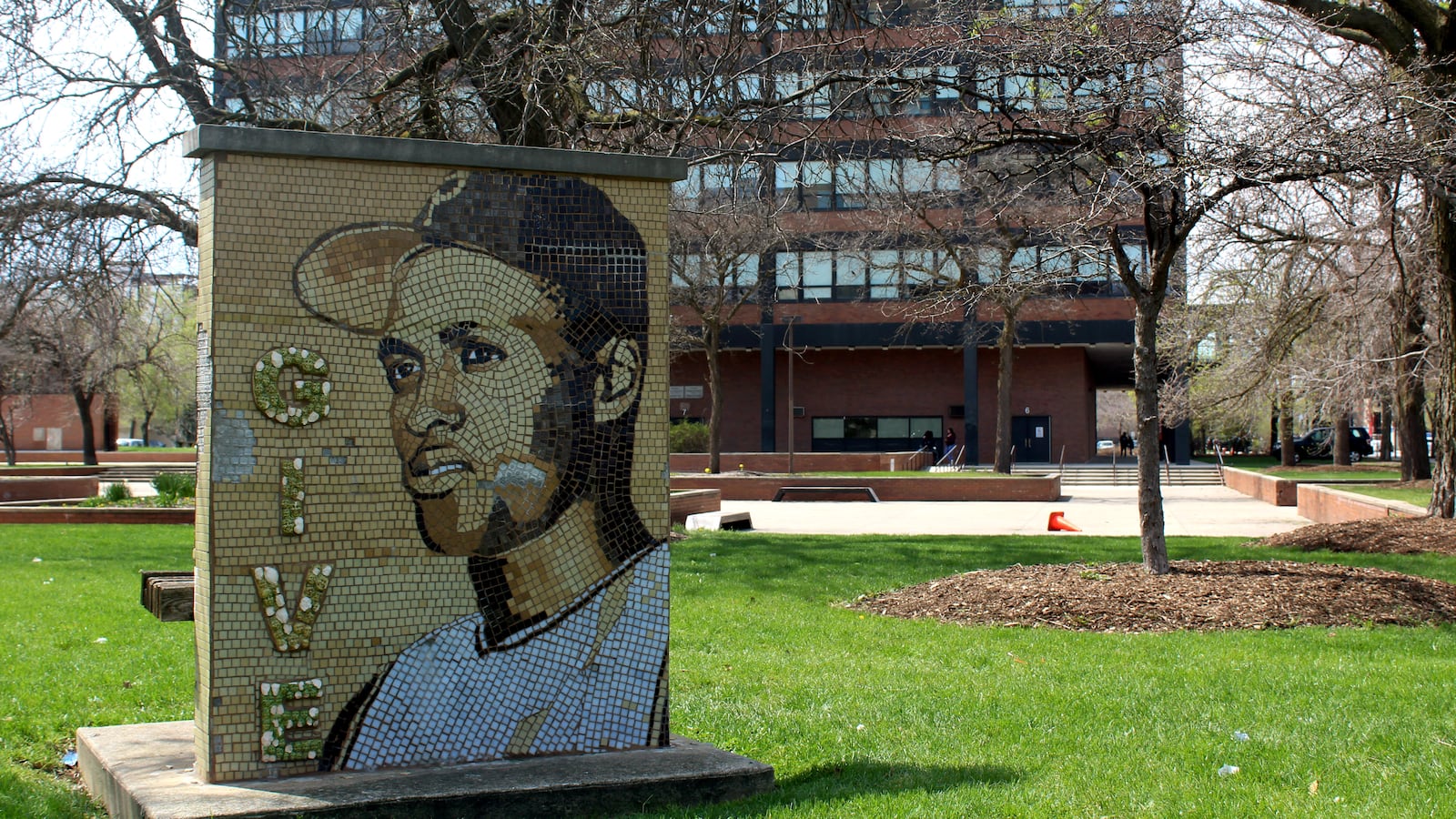Sign up for Chalkbeat Chicago’s free daily newsletter to keep up with the latest education news.
Chicagoans are serious about their public schools.
Alumni bear the names of their alma mater with pride. Parents of school-age kids investigate potential schools like seasoned detectives. Community members scrutinize, invest in, defend, and decry the quality of their neighborhood schools with vigor.
When Chicagoans are deciding where to go or send their kids to school, a school’s reputation can override other factors. But reputation doesn’t always reflect facts and realities. A school’s reputation can stubbornly remain in the collective memory despite shifts in staff, program offerings, and priorities.
In the 2022-23 school year, 44.51% of elementary school students and 76.18% of high school students opted out of attending their zoned neighborhood schools. As the city shifts its focus to neighborhood schools, Chalkbeat spoke with community members and alumni at four Chicago high schools about how reputation affects their schools and communities, and how they’re trying to change the narrative.
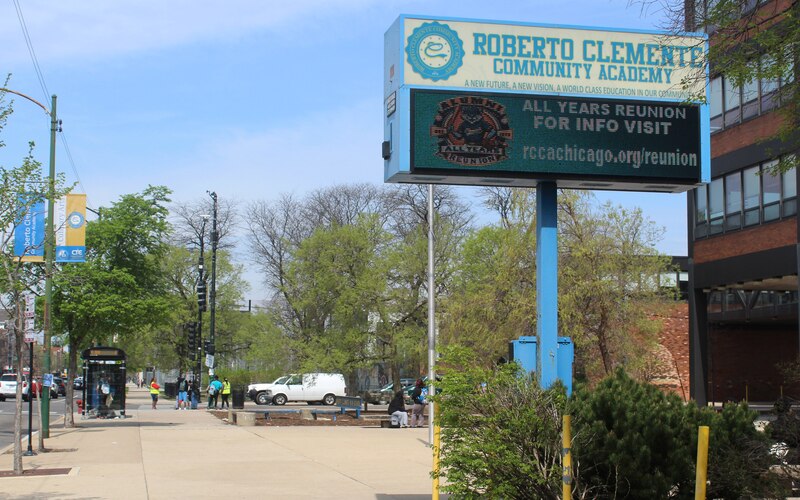
Roberto Clemente Community Academy: A school as a community center, the community as a campus
Humboldt Park, West Side, Founded 1974
Growing up in Humboldt Park, Hector Perez had heard stories about his neighborhood school, Roberto Clemente Community Academy. According to the rumors, it was violent and dangerous. So when he graduated from eighth grade in 2009, he dreaded going to Clemente for high school.
When classes started, he was surprised to find “zero examples” of the stories he had heard.
“Everything seemed pretty normal,” he said. “I didn’t feel like I was in harm’s way.”
In fact, Perez credits Clemente’s culinary arts program with getting him on track academically and eventually launching his career.
It’s why 11 years later, he’s back at Clemente as a culinary instructor and a member of the East Humboldt Park Community Action Council, or CAC, a group of staff and community members who support the neighborhood schools.
But he’s noticed that despite significant changes at the school, its reputation in the community is mostly the same.
Much of the damage to Clemente’s reputation occurred in the 1990s, when a Sun-Times article accused the school, which enrolled mostly Puerto Rican students, of supporting Puerto Rican radicals.
Investigations found no evidence to support the accusations, but programs created by community members at the school and the enrichment and support they brought vanished, said Marvin Garcia, the CAC chair and an educator who grew up in the community.
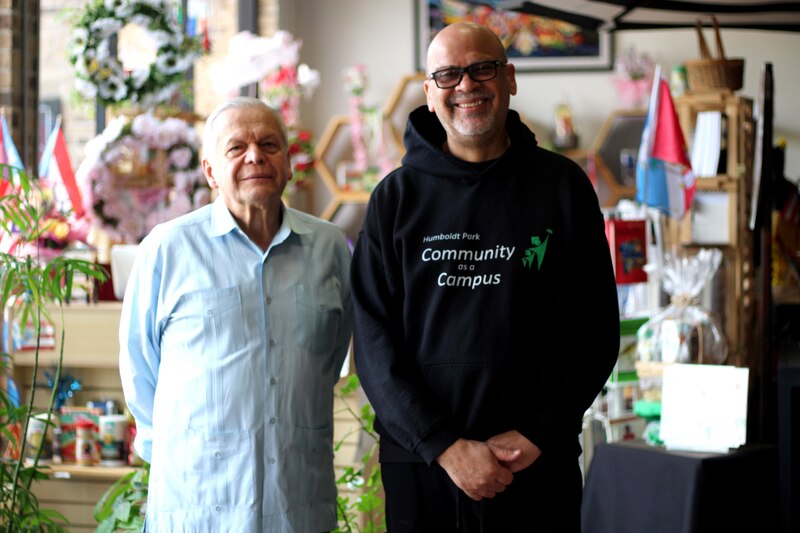
Clemente was on academic probation for 19 consecutive years until 2011, when José López, executive director of the Puerto Rican Cultural Center, began pushing for a return of community groups and programs to Clemente. The idea, he said, was to turn the school into “a community center school.”
Lopez’s “community as a campus” idea eventually became the East Humboldt Park CAC, which is facilitated by CPS.
Through these efforts, in the last decade Clemente has gotten a new athletic field and a library renovation. The dual-language, STEM, music, and career and technical education offerings have grown, and school leaders have strengthened dual enrollment programs with local universities. Partnerships with community organizations have created robust after-school programs with the goal of increasing attendance and retention.
In 2015, Clemente began offering the International Baccalaureate program, and within the year, the graduation rate rose dramatically from 56% to 68%. Today, the graduation rate is up to 76%, and the school is designated as “commendable” by the state, which is the second highest of five categories.
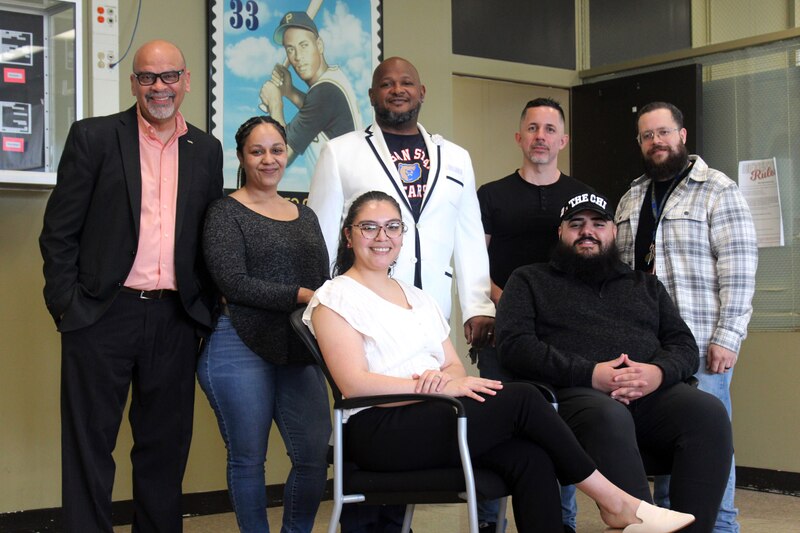
Principal Devon Morales says he sees a shift in school spirit among current students too. In 2022, he implemented the Wildcat Program, which allows students with 95% attendance, a 3.0 minimum GPA, and zero misconduct to keep their cellphones during the school day. They also get a certificate of achievement and a card that gives them free access to school games and dances.
“You wouldn’t believe how thirsty these kids are for those cards,” said Perez. “You’re definitely seeing a change even in students’ school spirit, and just (the pride) of wanting to wear the gold and blue that represents Clemente.”
Student attendance was up from 67.9% in 2022 to 74.6% in 2023.
Still, Garcia says, a bad reputation is not so easily overcome.
“A lot of the parents today were the students at Clemente when things were tough there,” he said. “So people only see the negative. They’re not seeing the inner workings and how the school has changed.”
Part of the problem, Garcia said, is that parents and elementary schools tend to send higher achieving students to selective-enrollment schools instead of their neighborhood schools, creating a sort of “brain drain” from the community.
To combat this exodus, CAC members organize “shadow days,” inviting students from local feeder elementary schools to check out Clemente and its offerings. In the 2023-24 school year, Clemente’s enrollment was up to 753 students, from 594 the previous school year.
“We want to make Clemente a school of choice for our community,” Garcia said.
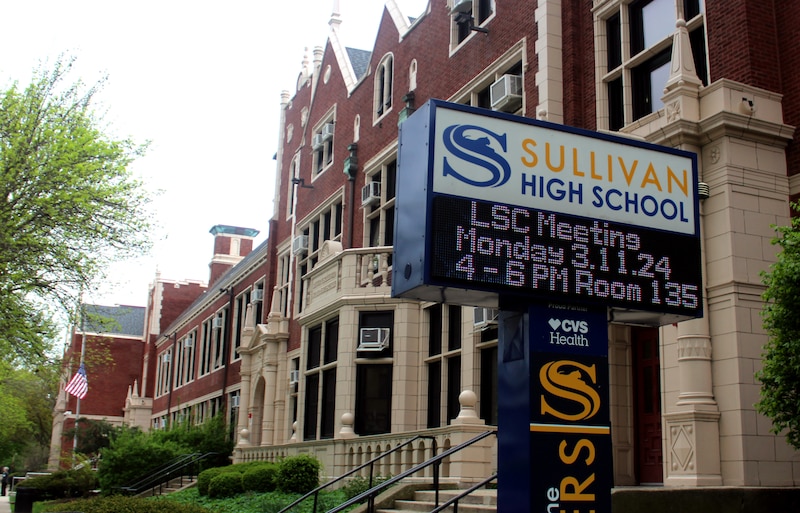
Sullivan High School, or ‘Refugee High’: A new principal, a new identity
Rogers Park, North Side, Founded 1926
In the 1970s and ‘80s, Sullivan High School enjoyed a pretty good reputation, particularly under longtime principal Robert Brazil, who was well-known for using the Paideia method, an approach to teaching inspired by ancient Greek debates.
In the two decades after Brazil retired in 1993, the school sank into academic probation and was one of the lowest-performing schools on the North Side.
In the 2010s, the school had a reputation as a haven for gangs. That reputation was somewhat accurate, according to former principal Chad H. Thomas, now director of school leader engagement in the CPS Department of Principal Quality.
When Thomas took over as principal in 2013, Sullivan’s desperate situation as a low-performing school — it had been on academic probation for low test scores and attendance rates for the eight previous years — actually made it easier for him to be more experimental. He implemented restorative justice practices, like a “peace room” used throughout the school day to mediate student conflicts, and he helped students who had too few credits to graduate transition to alternative schools to get back on track.
Community members jumped in, too.
In 2014, longtime Rogers Park resident Dorothy Gregory launched a community initiative called Our Schools-Rogers Park.
“The assignment was: Are our schools as bad as everybody says they are?” said Gregory. What they found, after examining the data, was that except for one elementary school, “our schools were actually pretty good.” Gregory got involved with the schools to sort out the realities from the reputations.
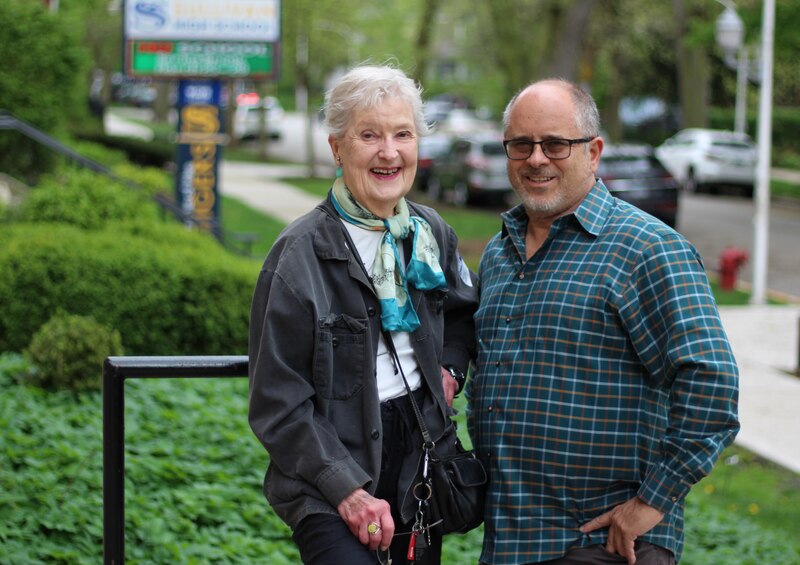
In 2015, Mike Glasser, president of the Rogers Park Builders Group, rallied his colleagues in the group to raise funds to build a life skills classroom for the school, and the group built a lasting relationship with the school.
Eventually, Glasser and Gregory founded Friends of Sullivan to support the school through fundraising. They’ve organized an annual basketball tournament fundraiser, restored musical instruments for the marching band, and secured a $25 million investment for facility improvements.
For those walking the halls, Sullivan was quickly becoming a different place, but the reputation outside of the school walls was a different beast. The sentiment among eighth grade students in the area was still “anything but Sullivan,” said Thomas.
“The unfortunate thing is, the schools are no different than any company and organization. A couple negative stories can taint you for years,” said Thomas.
As with a company, branding can go a long way for a school, he said. Together with students and staff, Thomas set about creating a new identity for Sullivan via a new logo and motto: “One Team. One Family. One Sullivan.”
But another identity took off. In 2017, an article in Chicago magazine deemed Sullivan “Refugee High” due to the school’s large number of students who were refugees from other countries and the programs Thomas had put into place to support them. In 2021, Elly Fishman, the author of the article, also wrote a book by the same name.
The school leaned into its new moniker, highlighting refugee students’ stories at school events and in the media.
The school hired more bilingual teachers and those certified to teach English to non-native speakers, and its supportive programming led to the school becoming the first CPS Newcomer’s Center for new arrivals.
Although Sullivan’s enrollment numbers have declined along with the rest of the district, the school’s reputation is much improved, according to Glasser and Gregory. CPS data shows that only 22.6% of CPS students who live in Sullivan’s boundaries attended the school in the 2022-23 school year. However, the school is drawing students from outside the neighborhood, with 38% of the students at the school living outside the school’s neighborhood boundaries.
“I sincerely hope that Sullivan maintains its forward momentum,” said Gregory. “It is a quality school, but it is not a Walter Payton by any means. We don’t have the resources.”
Thomas believes the school will continue to improve but noted that the momentum might slow.
“Making something good, great, in some ways, is harder,” he said. “When you get good, people start to take a little bite of the pie and want more say, and more voices come out.”
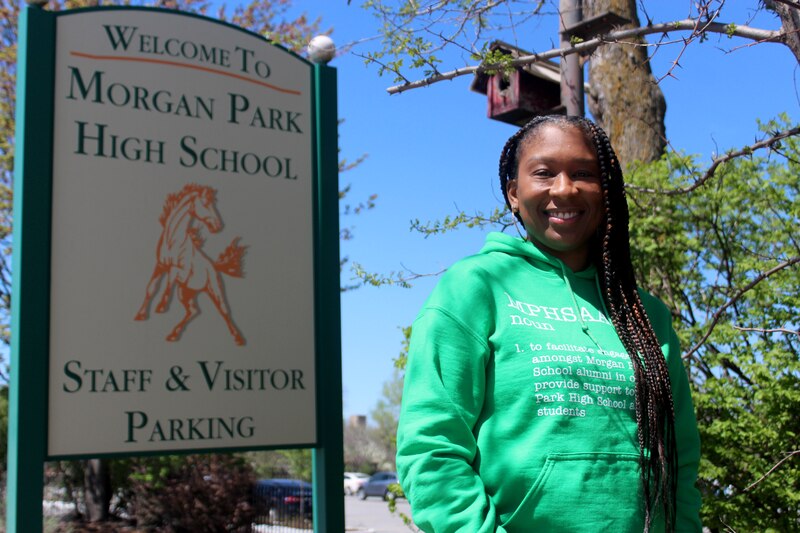
Morgan Park High School: One school, two reputations
Morgan Park, Far South Side, Founded 1916
On a fall day in 1934, 1,700 students at Morgan Park High School on Chicago’s Far South Side walked out of their school to protest the admittance of Black students. Only 58 students, most of them Black, went to class that day, according to The New York Times.
Today the school’s student body is 95.9% Black.
The surrounding 19th Ward, on the other hand, is 56.2% white, 34.1% Black, 7.1% Latino, and 2.6% Asian American, according to data from the 2017-2021 American Community Survey’s five-year estimates.
This contrast, according to former Morgan Park principal Femi Skanes, makes MPHS “an interesting anomaly.”
“I think that schools are reflections of communities. And so many times what’s happening in the community mirrors what’s happening in schools,” she said.
But although Morgan Park is a “true neighborhood school,” she said. “It doesn’t pull from the neighborhood as much, even though it has one of the biggest neighborhood boundaries in the city.”
Morgan Park alumna Carisa Parker said the school’s reputation has a lot to do with it.
For some families, the school is a community anchor with generations of family ties and close community connections. For others, especially those who can afford to send their kids to private schools, it is seen as a last resort.
Parker, whose three children also attended the school, served on the local school council for 14 years until her youngest daughter graduated this year. Thirty-two years after she graduated, she’s so involved with the school that people call her Carisa “Morgan” Parker.
In the 1980s, she said, Morgan Park was a natural next step for high achieving kids at magnet elementary school Metcalf (now closed), which Parker attended.
So she was surprised when in the early 2010s a few parents in Beverly started a group called “Make Morgan Park an Option for Your Child” with the goal of “fixing” the school.
“I’m like, ‘Wait a minute, Morgan Park is an option for your child,’” Parker recalled. “When you have a school that’s mostly Black students, quite frankly, people think of poverty, or they think about whatever preconceived notions or biases they have about Black students.”
The school currently has an 83% percent graduation rate and is ranked as a “commendable” school by the state.
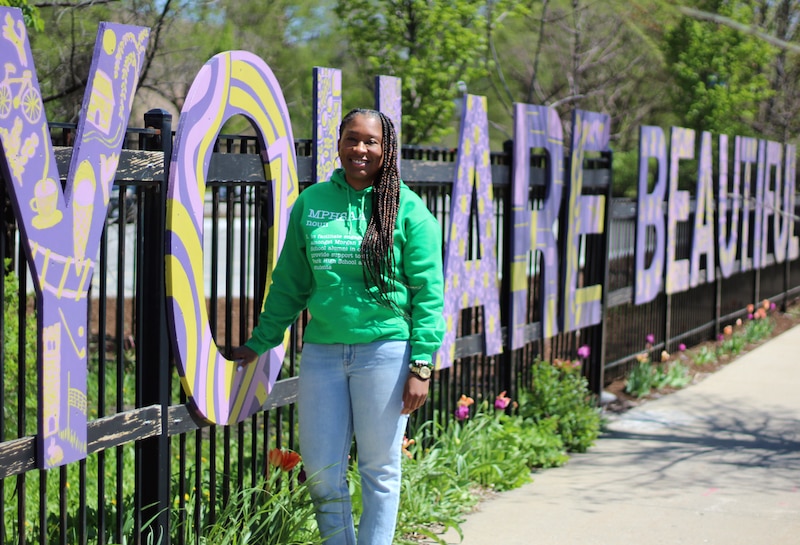
Quiana Edmond, president of the Morgan Park High School Alumni Association sees the majority Black student population as a positive.
“Even though it’s majority Black, there’s so much still there’s still diversity amongst Black students,” she said.
In 2018, when Skanes became principal, about 24% of the CPS students living in Morgan Park’s boundary actually went to the school.
The school’s reputation was suffering from a few setbacks, including video recordings of a couple of fights at the school that circulated for years beyond when they occurred.
“I did a lot of work to try to rebrand it and let it be seen in a positive light again – a lot of marketing, a lot of community engagement, a lot of working with people,” said Skanes, who now does similar work as an education consultant.
By 2022, when Skanes stepped down, nearly 30% of CPS students living in the school’s boundary chose the school.
Skanes understands that families often pick schools based on reputation and knows that school leaders have to take it into account, but she wishes things worked differently.
“Chicago (can be) racist and classist as a city, the same way that we think that certain neighborhoods are good based on who lives there; I think that’s the same thing that we do to schools,” said Skanes. “I think that we unfairly judge groups of people.”
For her part, Edmond wants to focus on the students who are already there.
“If we start bringing that talent back home and utilizing it for the greater good of the school, it will positively impact those students that are at the school,” she said. “There’s excellence that walked the hallways and still continues to walk those hallways.”
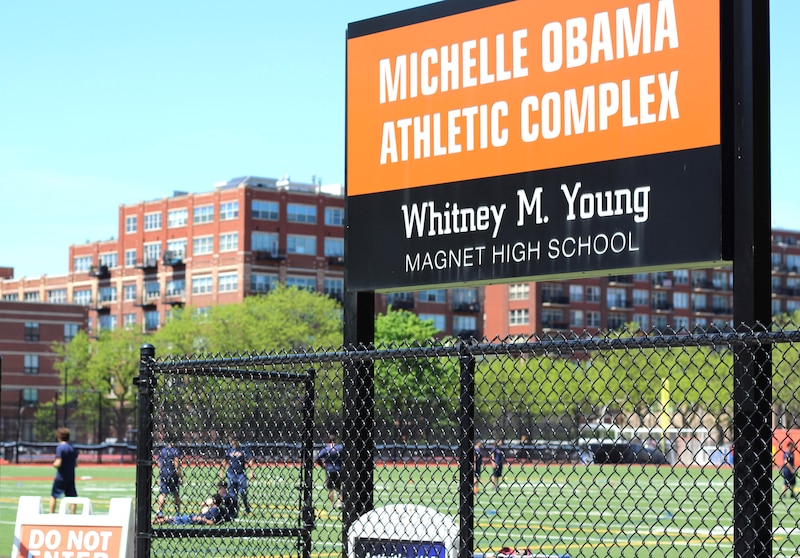
Whitney M. Young Magnet School: A stellar academic reputation, but fewer community ties
West Loop, Near West Side, Founded 1975
When Whitney M. Young Magnet School opened on Chicago’s Near West Side in 1975, it became the city’s first public magnet high school, with the goal of attracting “the best and the brightest ‘’ from across the city. Since then it has often been ranked among the top high schools in the nation.
But when Norm Collins, the president of the school’s alumni association, started there in 1977, “we had no idea what we were getting into,” he said. “The only reputation we had was that most of the kids from the West Side of Chicago did not like us, because we were the ‘smart kids’ going to the new school.”
In the school’s first year, the largely low-income families at nearby Crane High School, which was temporarily shut down that year, protested for local representation at the school. Three hundred seats were reserved for local students, but that agreement was dropped after four years.
The school’s relationship with the local community remains tenuous today.
The tall black fence and padlocked gate encircling the pristine turf of Whitney Young’s vast athletic field is an apt representation of the school’s relationship with the surrounding community, said May Toy, president of the Skinner Park Advisory Council.
The field was built in 2019 on land that used to be part of Skinner Park, using tax-increment financing dollars. Former Whitney Young principal Joyce Kenner assured community leaders that the field would be open to the public.
But neighbors find the gate is rarely unlocked.
“They don’t feel a connection to the community,” said Toy, who has lived in the community nearly three decades. “And the school, for its part, doesn’t try to foster that connection.”
Believing that a school is an anchor of a community, Toy used to be part of the Friends of Whitney Young group, volunteering and donating to the school. She stopped when she realized that to the school, “community” did not mean the people living in the surrounding neighborhood, she said.
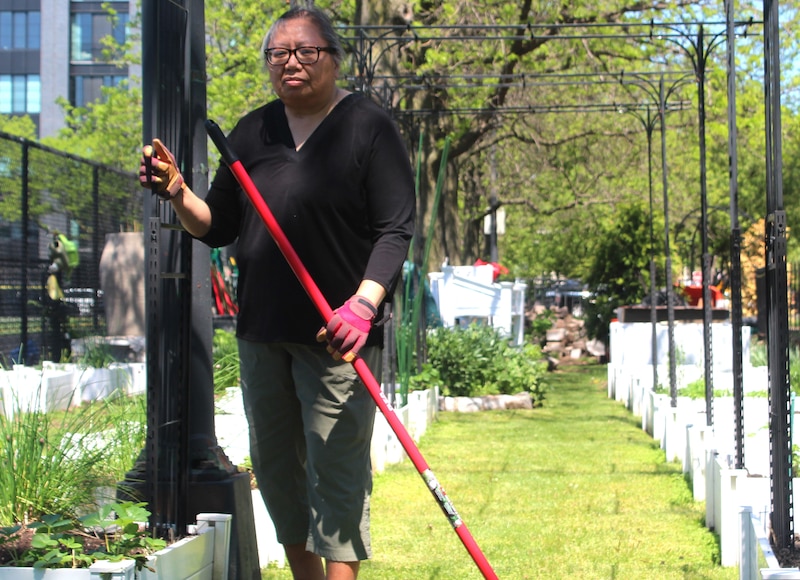
Collins, whose five children also attended the school over the last few decades, said the school has always been pretty insular.
In the early years, he said, the school developed its own sort of “family atmosphere” with students forming close bonds because they were going through what was then a completely new experiment together.
Over the years, things have changed, said Collins, and now students feel a lot of pressure because of the school’s famous reputation for high achievement. Students focus intensely on academic and extracurricular success to the exclusion of connections outside the school.
It’s right there in the school’s motto: “Where academic excellence is the standard.”
“If that’s not pressure …” said Collins with a laugh. “I always say getting into the school is not hard. Getting out of the school is hard.”
This year Whitney Young was ranked as the third best high school in the state in the annual U.S. News school rankings.
That reputation is part of what drew alumna Amber Townsend to the school in the early 2000s. For Townsend, who grew up in a low-income household in Austin just a 10-minute drive from Whitney Young, the school was a pathway toward upward mobility. But as a West Sider, she also considered the school to be a part of her community.
She thinks other West Siders should have that opportunity as well.
Drawing its students from all across the city, Whitney Young is one of few CPS schools that boast an integrated student population, though there has been a decline in the share of Black students, from 26.8% in 2010 to 17.9% in 2023.
Over the years that Toy has lived in the neighborhood, she’s seen the neighborhood’s demographics and wealth change as well. With those changes, she said, there have been redoubled efforts to get the school to open up seats to students from the neighborhood.
But community members who have remained in the area through its many changes, like Toy, say they simply want the school to make good on its promises.
The school’s gym, for example, was built to serve also as a public pool and field house for park patrons, but the seniors and families with children in nearby subsidized housing rarely have access, said Toy.
Change may be in the air. There is a new principal, Rickey Harris, at the helm, and Collins said the alumni association hopes to expand its annual cookout honoring activist Whitney Young into a community-wide festival.

